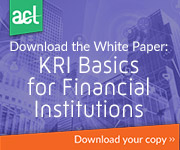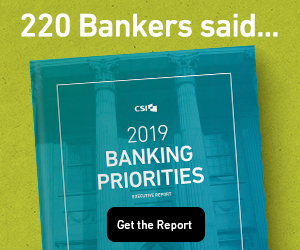|
This ABA Banking Journal newsletter is a free, twice-monthly supplement to the ABA Banking Journal magazine intended to help you stay on top of industry and policy news.
You can also stay abreast of banking news by visiting aba.com/BankingJournal, home to ABA Daily Newsbytes stories, digital exclusives, the ABA Banking Journal Podcast and more.
The latest episode of the ABA Banking Journal Podcast features interviews with the winners of ABA's 2018 Community Commitment Awards. (ABA Banking Journal)
|
After remaining depressed for most of the recovery period, inflation has moved back up toward the Federal Reserve’s 2 percent target over the past year. The personal consumption expenditures index—the Fed’s preferred measure of inflation—came in at 2 percent in March and remained slightly above this threshold over the following three months on a year-over-year basis. (ABA Banking Journal)
|
Libor—the London Interbank Offered Rate—is perhaps the liveliest dead man walking. The British Financial Conduct Authority has said Libor will be sustained through 2021, but its lack of depth and transparency makes its long-term viability questionable. (ABA Banking Journal)
|
Learn more about the leading professionals in the finance world that are making waves for new opportunities and strategies in banking. (Forbes)
|
The NFIB Small Business Optimism Index fell to 107.4, 0.5 point below September’s reading. This is just below the highest reading in index history.Thirty percent of business owners surveyed said the next three months would be a good time to expand, three points lower than last month’s reading. (ABA Banking Journal)
|
Although some fear that the continuous rise of cryptocurrency will hurt banks, issuing digital currencies will keep central banks on the map. With the disappearance of cash, going digital will not only help central banks remain successful, but it could also fight against cash-related illegal activity. (Bloomberg)
|
The number of worldwide correspondent banking relationships continues to decline, according to new figures released by the Basel, Switzerland-based Financial Stability Board. Relying on data released twice annually by the Swift network, the FSB found that active correspondent relationships declined by 15.5 percent across all currencies from 2011 to the end of 2017, and by 4.1 percent in 2017 alone. (ABA Banking Journal)
|
Noting that economic indicators are exceptionally positive, the Treasury’s Office of Financial Research flagged market risk, credit risk and cybersecurity as high or moderate concerns in its annual financial stability report. (ABA Banking Journal)
|
The Federal Reserve is watching growth in the leveraged loan sector with an eye to its systemic implications, Federal Reserve Vice Chairman for Supervision Randal Quarles told the Senate Banking Committee recently. (ABA Banking Journal)
|
To maintain lower inflation rates and further economic development, the U.S. central bank will continue the gradual interest-rate increase plan. Williams explains that this plan is in the context of a strong economy. (Bloomberg)
|
The FDIC is seeking public feedback on the steps it can take to encourage FDIC-supervised banks to offer small-dollar credit products to meet the needs of consumers, the agency announced today. Comments will be due 60 days after publication in the Federal Register. (ABA Banking Journal)
|
ABA has called on the OCC to quickly finalize a proposal to implement a new section of the Home Owners’ Loan Act permitting certain federal thrifts to elect the rights and duties of national banks, as mandated by the regulatory reform law S. 2155. The proposal emerged from banker recommendations and has been strongly championed by ABA. (ABA Banking Journal)
|
|








